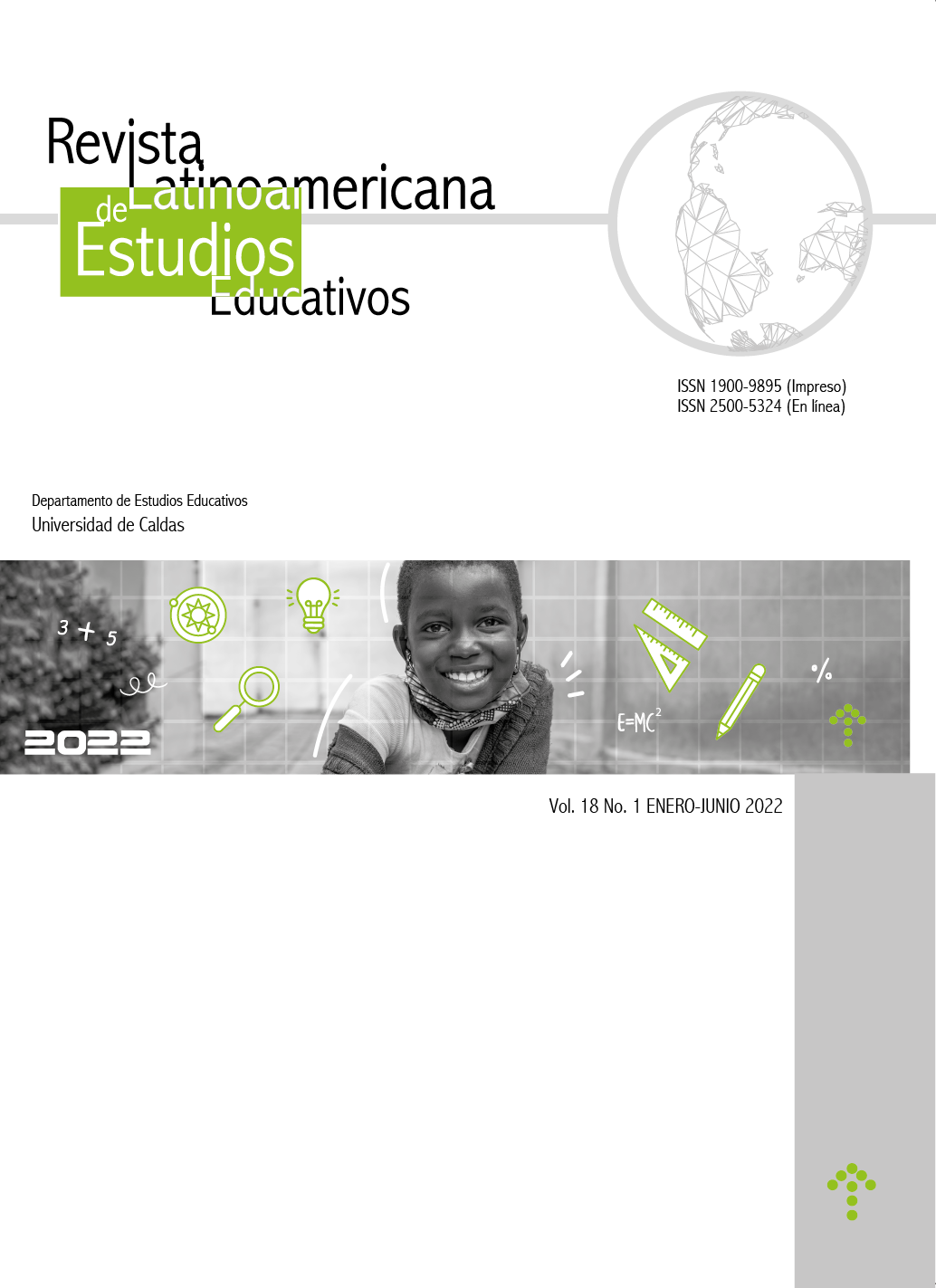Authors
Abstract
Objective: to analyze the understanding of the Sense of Coherence Scale (SOC-29) in university students. Materials and methods: quantitative study of the validation of instrument type. Cognitive tests were applied to 93 university students through two discussion spaces in which the level of understanding of the Sense of Coherence scale was analyzed. Results: the closed discussion allowed identifying the level of understanding of the scale in terms of relevance, clarity and vocabulary. In the univariate analysis, more than 90% of the students rated it with a high level of clarity, relevance and vocabulary. For the bivariate analysis, the semester and the social stratum were statistically associated with all items and all dimensions p<0.05. With the open discussion, few difficulties were identified for the understanding and the interpretation of the items of the instrument and grammatical and semantic changes were consolidated that finally allowed its adaptation. Conclusion: the comprehension tests confirm that the SOC scale can be applied in university
students and configured as a diagnostic element to strengthen educational processes.
References
Antonovsky, A. (1996). The salutogenic model as a theory to guide health promotion. Health Promotion International, 11(1), 11–18. https://doi.org/10.1093/heapro/11.1.11
Asociación Médica Mundial. (2000). Declaración de Helsinki: principios éticos para la investigación médica sobre sujetos humanos.
https://www.wma.net/es/policies-post/declaracion-de-helsinki-de-la-amm-principios-eticos-para-las-investigaciones-medicas-en-seres-humanos/
Corona, J., Palacios, G., y Juárez, L. (2020). Diseño y validación del instrumento “enfoque directivo en la gestión para resultados en la sociedad del conocimiento.” Revista Espacios, 41(1), 1–13.
Cruz Martínez, Ó. (2015). Validación de instrumento para identificar el nivel de vulnerabilidad de los trabajadores de la salud a la tuberculosis en instituciones de salud (IVTS TB-001). Universidad Nacional de Colombia.
Escobar Castellanos, B., Cid Henríquez, P., Juvinyà Canal, D., y Sáez Carrillo, K. (2019). Estilo de vida promotor de salud y sentido de coherencia en adultos jóvenes universitarios. Hacia La Promoción de La Salud, 24(2), 107–122. http://vip.ucaldas.edu.co/promocionsalud/downloads/Revista24(2)_9.pdf
Fernández-Martínez, E., Liébana-Presa, C., y Morán Astorga, C. (2017). Relación entre el sentido de coherencia y el cansancio emocional en estudiantes universitarios. Psychology, Society and Education, 9(3), 393–403. https://doi.org/10.25115/psye.v9i3.861
Guevara Castillo, M. S., Marcelo, N. C. T., & Susana, H. A. (2017). Dimensionalidad y propiedades psicométricas de la escala soc en estudiantes de la ESPOCH. MktDESCUBRE, 84–93. https://doi.org/10.36779/mktdescubre.v10.145
Hernán, M., Morgan, A., & Mena, A. (2013). Formación en salutogénesis y activos para la salud. Escuela Andaluza de Salud Pública. http://www.easp.es/project/formacion-ensalutogenesis-y-activos-para-la-salud/
Jara, C. y Mayor-Ruiz, C. (2019). Explorar la Construcción de la Identidad Docente en Profesionales de la Salud: Diseño y Validación de Instrumento. Formación Universitaria, 12(1), 13–24. https://dx.doi.org/10.4067/S0718-50062019000100013
Lira, M. T. y Caballero, E. (2020). Adaptación transcultural de instrumentos de evaluación en salud: Historia y reflexiones del por qué, cómo y cuándo. Revista Médica Clínica Las Condes, 31(1), 85–94. https://doi.org/10.1016/j.rmclc.2019.08.003
Lizarbe, M., Guillén, F., Aguinaga, I., & Canga, N. (2018). Validation of Antonovsky Orientation to Life Questionnaire (OLQ-13) in a sample of university students in Navarre. Anales Del Sistema Sanitario de Navarra, 39(2). https://doi.org/10.23938/assn.0270
Martínez, M. G. & Juárez Hernández, L. G. (2019). Diseño y validación de un instrumento para evaluar la formación en sostenibilidad en estudiantes de educación superior. IE Revista De Investigación Educativa De La REDIECH, 10(19), 37–54. https://doi.org/10.33010/ie_rie_rediech.v10i19.501
Minsalud. (1993). Resolución 8430 de 1993. https://www.minsalud.gov.co/sites/rid/Lists/BibliotecaDigital/RIDE/DE/DIJ/RESOLUCION-8430-DE-1993.PDF
Möllerberg, M. L., Årestedt, K., Sandgren, A., Benzein, E., y Swahnberg, K. (2019). Adaptation and psychometric evaluation of the short version of Family Sense of Coherence Scale in a sample of persons with cancer in the palliative stage and their family members. Palliative and Supportive Care, 1–9.
Navarro, G., Florez, G., y Gonzalez, M. G. (2020). Construcción y Estudio psicométrico de un instrumento para evaluar inteligencia emocional en estudiantes chilenos. Rev. Estud. Exp. Educ., 19(39), 29–43.
Pérez Sánchez, R., Alfaro Chavarría, D., y Mora Pineda, M. (2014). Procesamiento sociocognitivo individual y grupal de películas y la formación de identidades sociales asociadas a la categoría nación. Revista De Ciencias Sociales, 1(143), 119–129.
Rivera, F., López, A., Ramos, P., y Moreno, C. (2011). Propiedades psicométricas de la Escala Sentido de Coherencia (SOC-29) en adolescentes españoles. Revista de Psicologia Da Criança e Do Adolescente, 4, 11–39. https://idus.us.es/xmlui/bitstream/handle/11441/41008/propiedades psicometricas escala.pdf?sequence=1
Sanchez Palacio, N., Vélez Álvarez, C., y Betancurth, D. P. (2021). Validación de contenido y adaptación de la escala de sentido de coherencia 29 para la población colombiana. Rev. Fac. Nac. Salud, 39(3), e342827. https://doi.org/10.17533/udea.rfnsp.e342827
Saravia, J. C., Iberico, C., y Yearwood, K. (2014). Validation of sense of coherence (SOC) 13-item scale in a peruvian sample. Journal of Behavior, Health & Social Issues, 6(2), 35–44. https://doi.org/10.5460/jbhsi.v6.2.43847
Vega Martínez, M. del C., Frías Osuna, A., y Del Pino Casado, R. (2019). Validity and reliability of the sense of coherence scale among nursing undergraduate students
from a Spanish university. Gaceta Sanitaria, 33(4), 310–316. https://doi.org/10.1016/j.gaceta.2018.02.009
Velásquez, H., Cárdenas, V., Chávez, A., Montes de Oca, V., Hernández, P., y Pulido, M. (2014). Comparación de dos formas de una escala de sentido de coherencia. Revista Intercontinental de Psicología y Educación, 16(2), 51–70.
Vélez Álvarez, C., Jaramillo Ángel, C. P., García Ramírez, J. A., y Barrera Valencia, C. (2017). Adaptación transcultural de mensajes de texto para autocuidado en gestantes. Revista Investigaciones Andina, 19(34), 1813–1828. https://doi.org/10.33132/01248146.935
Willis, G. (2012). Cognitive Interviewing Training Guide. Research Triangle Institute.

 PDF (Español)
PDF (Español)
 FLIP
FLIP
























